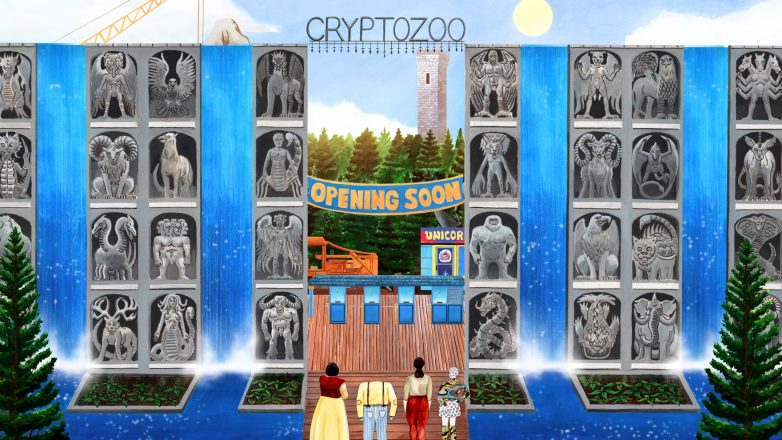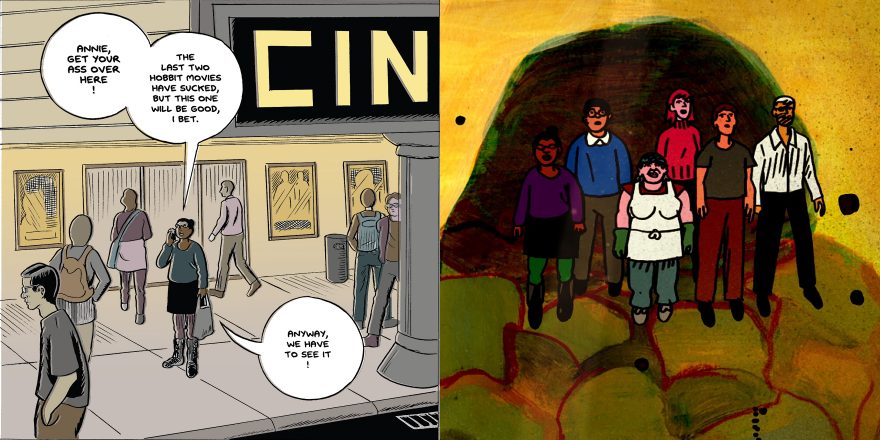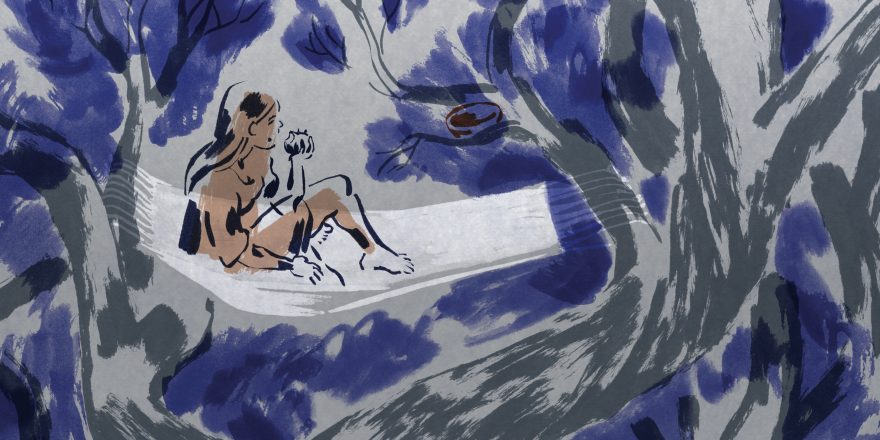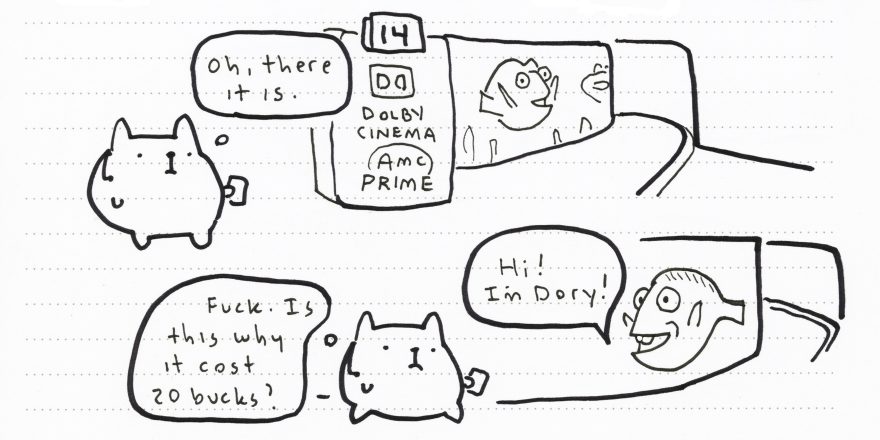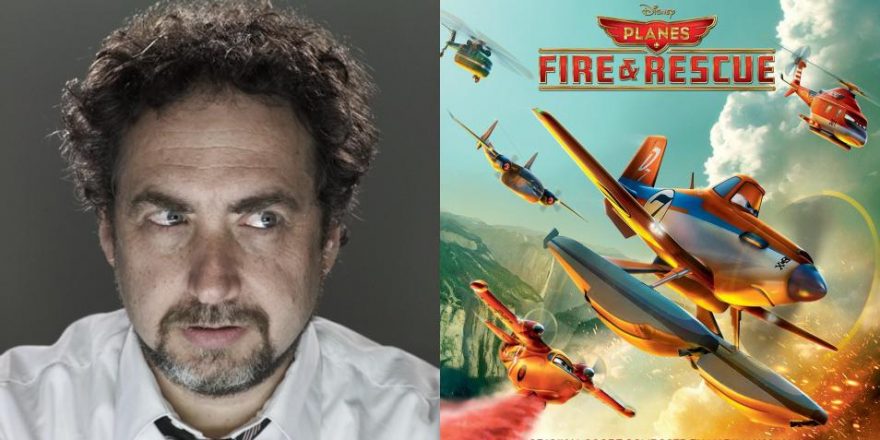My new animated feature Cryptozoo was written and storyboarded when Obama was president. The first voice recordings were made during the early months of the Trump presidency. Then, four years later, the final pick-up voice recordings were recorded remotely, due to the pandemic. Now, it’s premiering at Sundance under Biden.
We were in production for all of those years, working on it every day. While the original script and plan didn’t change, of course everything (such as painting a background, or drawing a figure, or recording a voice) happens in its own present moment. Cartoons and comics – my two chosen mediums – are similar in that they both require long, painful production processes to create work that zips by quickly, 12 drawings a second. Your sense of time inside the work is diametrically opposite the sense outside the work. In the making, this fosters and encourages a future-focused view. On the one hand, this is forgiving because it is more like a marathon, as opposed to the frenzied sprints of live-action shooting. The pace provides a lot of time to make corrections; we could change the look of whole scenes up until the final mix. However, animator burnout is brutal, and working toward an invisible, uncertain future creates its own altered state.
When the pandemic struck, the anxiety of the present moment overwhelmed me. I found it hard to focus on anything other than the present. As a therapeutic practice, I turned to making collages. It provided a creative outlet with some immediacy. Usually a collage would only take a couple hours. Incorporating drawing into the collages allowed me to not be so beholden to my scrap collection. I could doodle and generate pictures and words from my imagination. Then the collage-making is aligning what’s in my head with debris from the outside world.
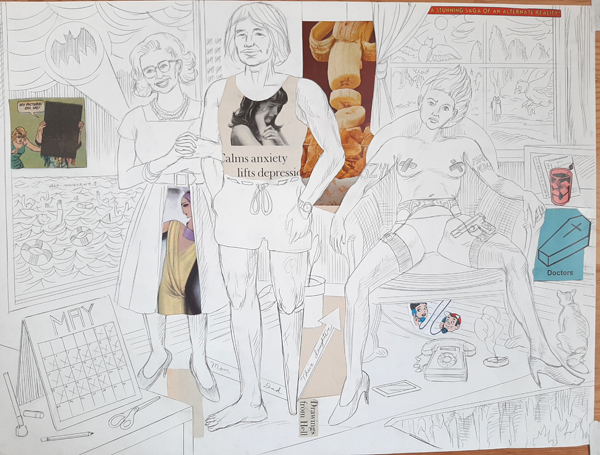
I live in Richmond, Virginia, which is blessed by still having lots of used bookstores that carry old magazines and printed matter at low prices for me to plunder and pluck out material. Tall magnet boards cover the walls of my studio. They look like the monoliths in 2001: A Space Odyssey. I buy little black magnets in bulk to make large scale arrangements of everything I’m working on, whether it’s storyboards or frames or comic pages. I stick material for future collages onto the boards and let them wait until they find their way into something, either as a piece for a single-image composition or as an image I’ll adapt and adjust to fit into a comic or movie.
Sometimes a fragment will wait for a long time. I have a page from a catalog of money clips that’s been on my wall for a year. I will use it someday, but the right pairing or context hasn’t presented itself yet. Other scraps are already complete on their own, and adapting or adding to them would only diminish their power.
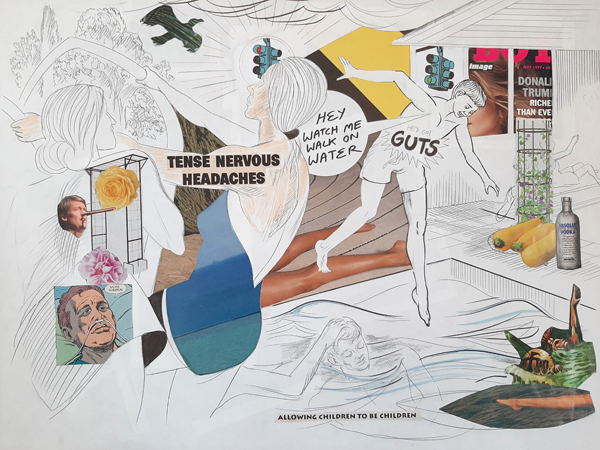
I acquired a bunch of men’s magazines from the eighties and nineties and I was surprised how present Trump was in so many of them. I’d forgotten how long his brand had been building. Random men’s magazines that don’t exist anymore often had a small article about Trump. His force as a character, a brand and a symbol was so strong. I was reminded of what J. G. Ballard said when he heard Arnold Schwarzenegger was elected Governor of California. His immediate reply was, “If people could, they’d elect Mickey Mouse!”
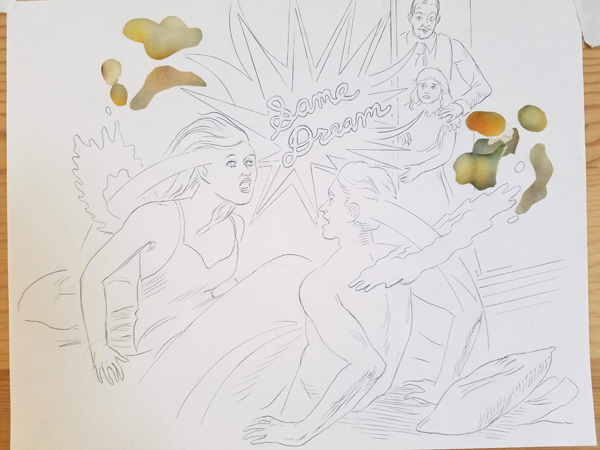
I ordered the Max Ernst collage novels, which I had seen before but never actually read. They are like fractured pulp mystery stories. I have to think that they were in some way a method of channeling the 1933 Germany anxiety in the air into art. A Week of Kindness was supposedly made in a single month in 1933. The cribbed Victorian illustrations carry a repressed eroticism brought forward by his new elements, but I also see in these collage novels a tremendous anxiety and terror. I sense a feeling that all order could be replaced. I get this same feeling in Buñuel’s films and, more recently, in Yorgos Lanthimos’ movies. All of the rules of society could just as easily be different, all words could have different meanings, and that the space between the name and the named is tenuous, not fixed.
Collage is like directing, in that you’re orchestrating different elements to arrive at one unified composition. The goal is to find interesting arrangements, harmonies or juxtapositions between everything – the story, characters, and the formal properties.
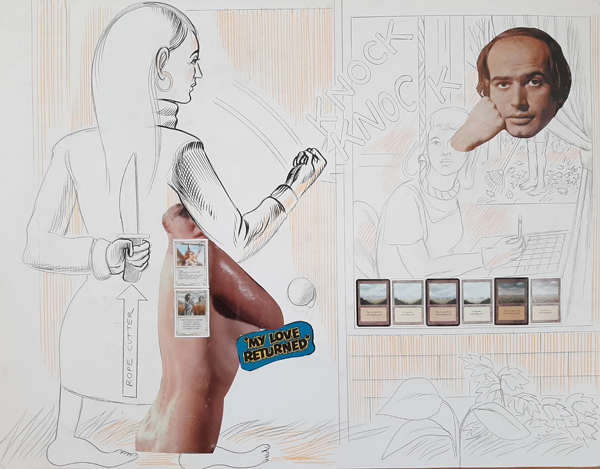
There has to be an interplay in the space between things. As Bresson said, “One cannot at the same time be all eye and all ear.” If everything is forward, the composition loses meaning. Forward objects need to somehow point backward, ideally creating a bounce that then goes forward again. You must create a dynamic path for the eye to take. Unexpected contradictions create loops that have to be completed or at least wrestled with inside the viewer’s mind.
The best feeling is when inspiration strikes and an element that shouldn’t work, does. A familiar object is placed into a new context and its meaning changes. I think of this with film sounds, where the right sound is maybe not the most realistic sound. Cryptozoo is full of moments that surprised me in the making, juxtapositions and harmonies that intuitively, magically aligned. For instance, the character of Phoebe, a gorgon, I left uncolored, white, which created a variety of different associations across the movie. I strive for the connections between all of the elements to have a special spark of inspiration. The collages helped me practice this in a quick, raw way.
When the world feels crazy and broken, it’s comforting to organize the debris into little stories and compositions.




